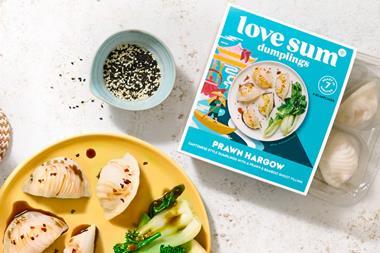Frozen foods has to be one of the most frustrating categories in which to operate. Despite the fact that frozen foods may well hold the solution to growing concern over the use of artificial preservatives, the industry is still held in contempt by many consumers.
Even with top chefs fighting frozen's corner, such as three Michelin-starred chef Heston Blumenthal, who recently said that frozen peas were much better than their fresh equivalent, companies seem to be fighting a losing battle.
The market is currently worth £3.1bn, according to TNS figures for the year ending 26 March 2006, and is in decline by 2.9% year-on-year. The fall has been largely driven by households shopping the fixture less frequently, which has resulted in the average annual spend on frozen foods tumbling from £131.97 to £128.36 in the latest year.
A recent survey by BMRB has revealed that a large proportion of consumers view the category as old fashioned, down market, and less healthy than chilled.
The category has fallen most out of favour with consumers aged between 15 and 34. When faced with the statement, 'frozen foods are as good for you as fresh foods', only 25% of 15 to 34-year-olds said they agreed, compared with 40% of 55-year-olds and older.
Frozen meat is experiencing the steepest value decline of the five frozen foods categories, which include vegetables, fish, savoury products and confectionery. Frozen meats currently make up 24.3% of the total frozen market and are in decline by 8.1%.
In value terms, frozen vegetables is the largest sector, accounting for 25.3% of sales. However, TNS data shows that this sector is also in decline by 3.5 % year-on-year. This has been driven by poor performance in key sub-sectors such as chips, which have fallen by 3% and potato products down 5.7%, despite efforts by some brands to promote the low-fat credentials of their products.
Long-term price deflation has helped to damage consumer perception, and shoppers seem to view the category rather like chilled's cheap and tacky cousin, a notion which is proving pretty hard to shake. Tim Kershaw, CEO of supply chain management consultancy Libra Europe, is quick to blame manufacturers and retailers for this. "Frozen food has suffered declining sales and a deteriorating image over the past 20 years as certain companies have focused consumers on low-quality, low-cost frozen goods," he says. "It has also suffered as the chilled food sector has promoted itself as the high-quality, fresher alternative.
"Companies need to get back to the original marketing tactics of Clarence Birds Eye, who focused on the freshness that freezing locks into a product."
This is exactly what Unilever is doing with its Birds Eye brand. In April, the company launched a £21m television, radio and press campaign, and even enlisted the help of restaurant critic Richard Johnson to help change the negative perceptions many consumers still have of the industry.
John Farrell, Birds Eye category director, says: "People have wrongly labelled frozen food as poor quality and we want to set the record straight. We want retailers and consumers to reappraise the category by telling the truth.
"Frozen food is good food - the Birds Eye team only uses the best-quality ingredients and we freeze them to lock in the goodness and to keep them at their peak."
John Hendy, commercial director at Tryton Foods, which owns the Aunt Bessie's brand, is another advocate of frozen foods. "Unlike ambient and chilled, the frozen production process means that you are not reliant on additives to extend shelf life," he says. "It is store cupboard cooking - straight from the freezer.
"The UK consumer already readily accepts that some frozen products, such as vegetables, are often better in terms of vitamin and mineral content than their fresh counterparts - the challenge is how to extend this very real benefit across the rest of the frozen food category."
It's a sizeable challenge, but one that all parties agree is achievable, if industry retailers and suppliers start to work together.
Unilever may have grasped the nettle, but others need to follow, says Jon Smythe, head of customer marketing at McCain. "The success of frozen is about all of us working together towards changing perceptions."
Farrell is optimistic about the future of frozen, because of what he says are its inherent strengths. Ninety-six per cent of households already have a freezer and a large proportion of consumers buy chilled products and then freeze them for later use, so it is not frozen food per se that consumers don't like. Winning back these consumers is key, as is driving interest through innovation and new product development, he says.
Convenience remains an important factor for the frozen category, and there are still many avenues for innovation down this route. "Today's consumer demands quality and will not sacrifice taste for convenience," says Adrian Mooney, marketing manager for Goodfella's pizzas. "While busy lives leave less time for cooking, or even eating, the consumer expects more choice and products tailored to their individual needs."
While promotions continue to play an important role in the frozen foods offer, many companies believe that the category needs to work harder on the type of deals that it uses, and distance itself from the practice of deep discounting, if it is to shake off its cheap and cheerful image and win back consumer confidence.
Hendy says: "Aunt Bessie's actively encourages promotions where products can be linked together as a way of providing consumers with complete meal solutions. There has, however, got to be a better understanding in the industry about defining what is a great promotion.
"All too often we tend to look at the short term uplift and at Aunt Bessie's we are now challenging the role of promotions by looking at the longer-term category benefits." n

















No comments yet